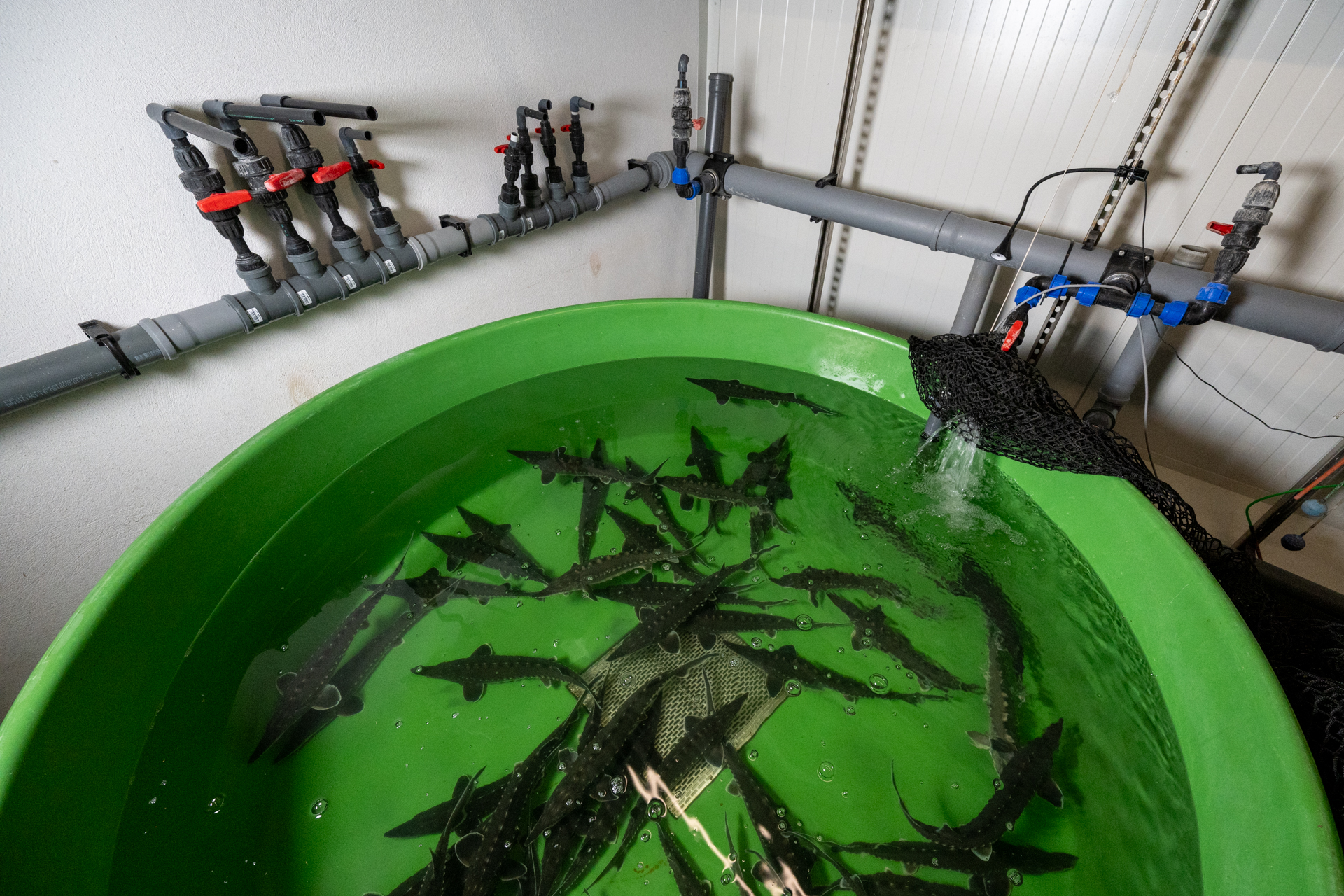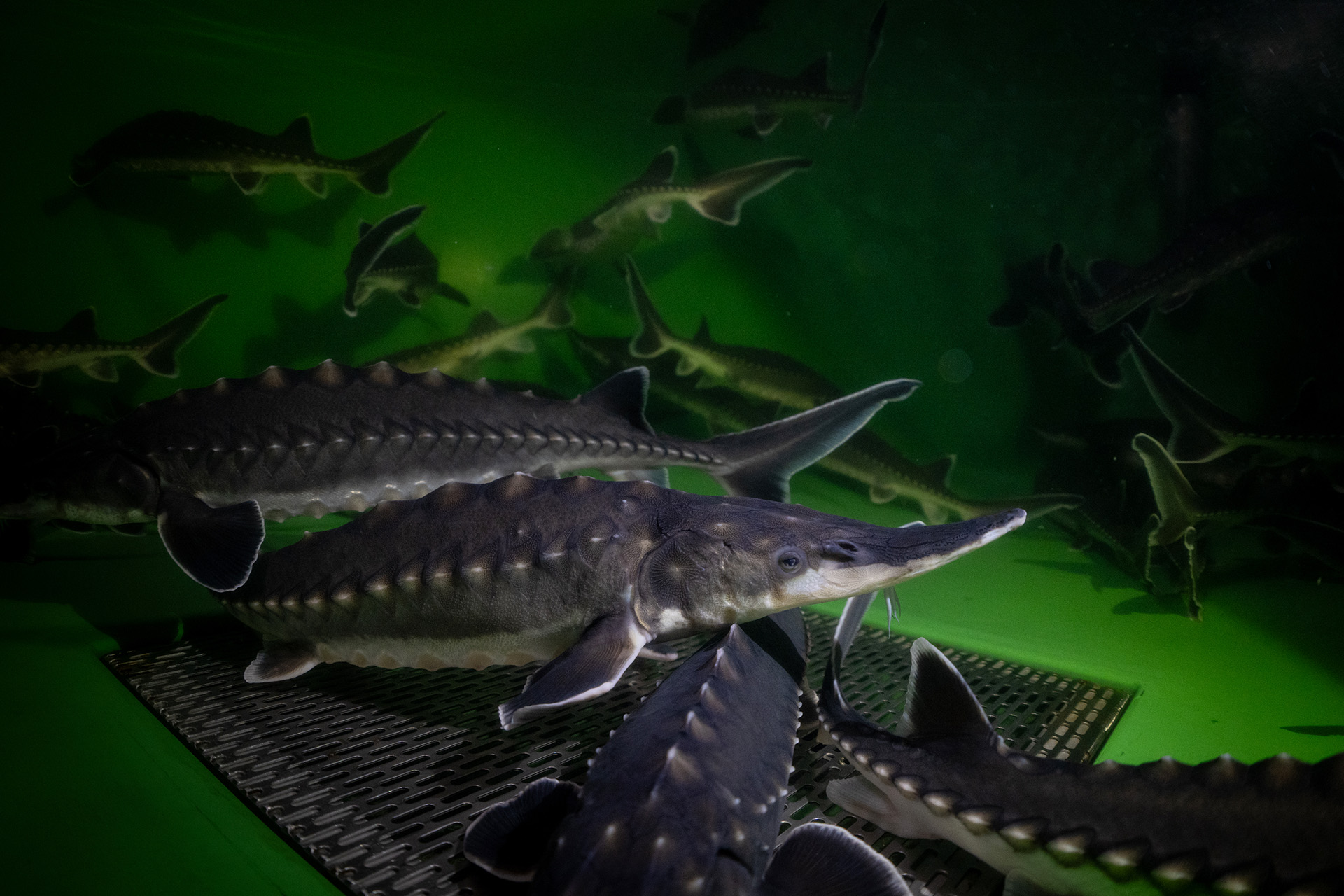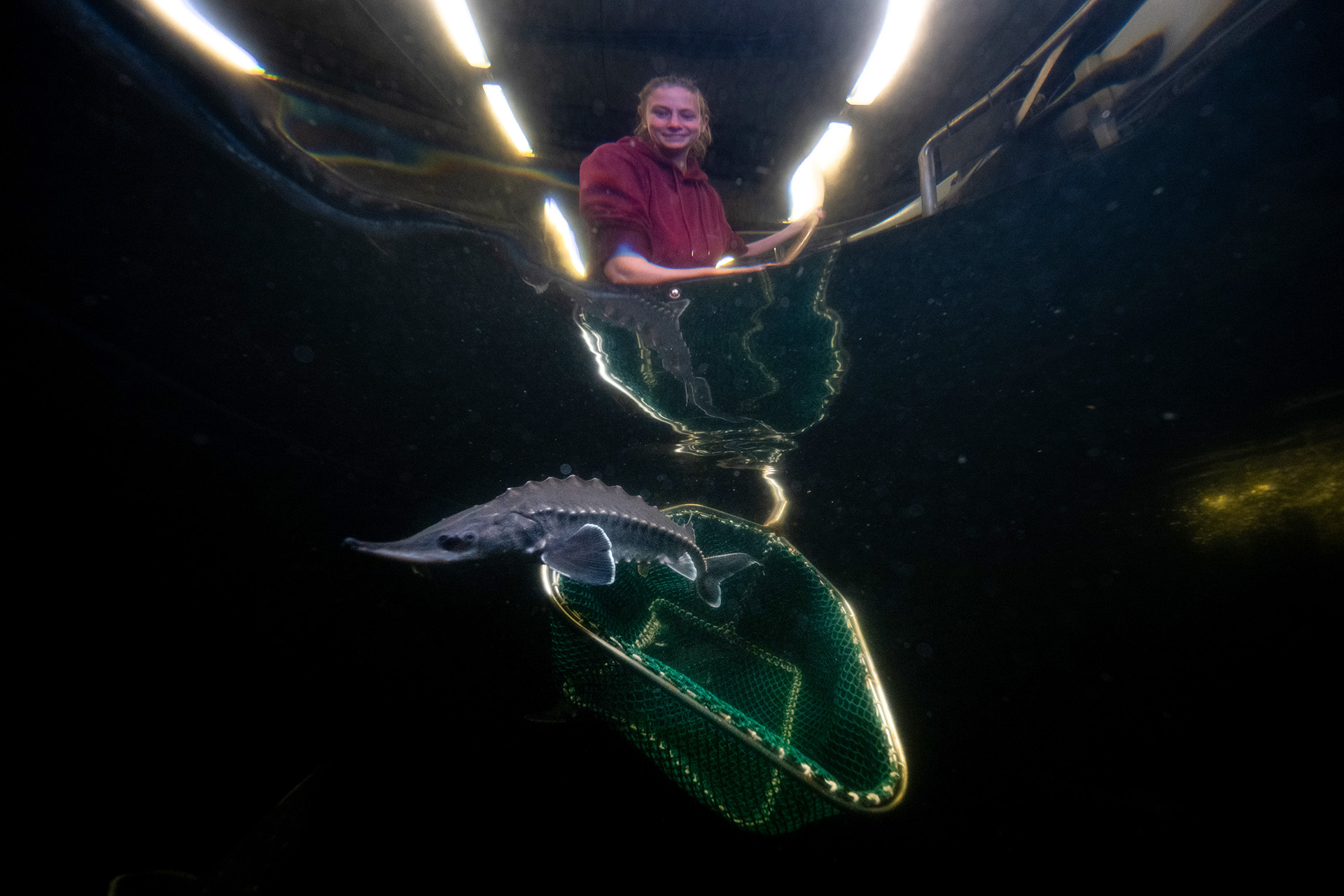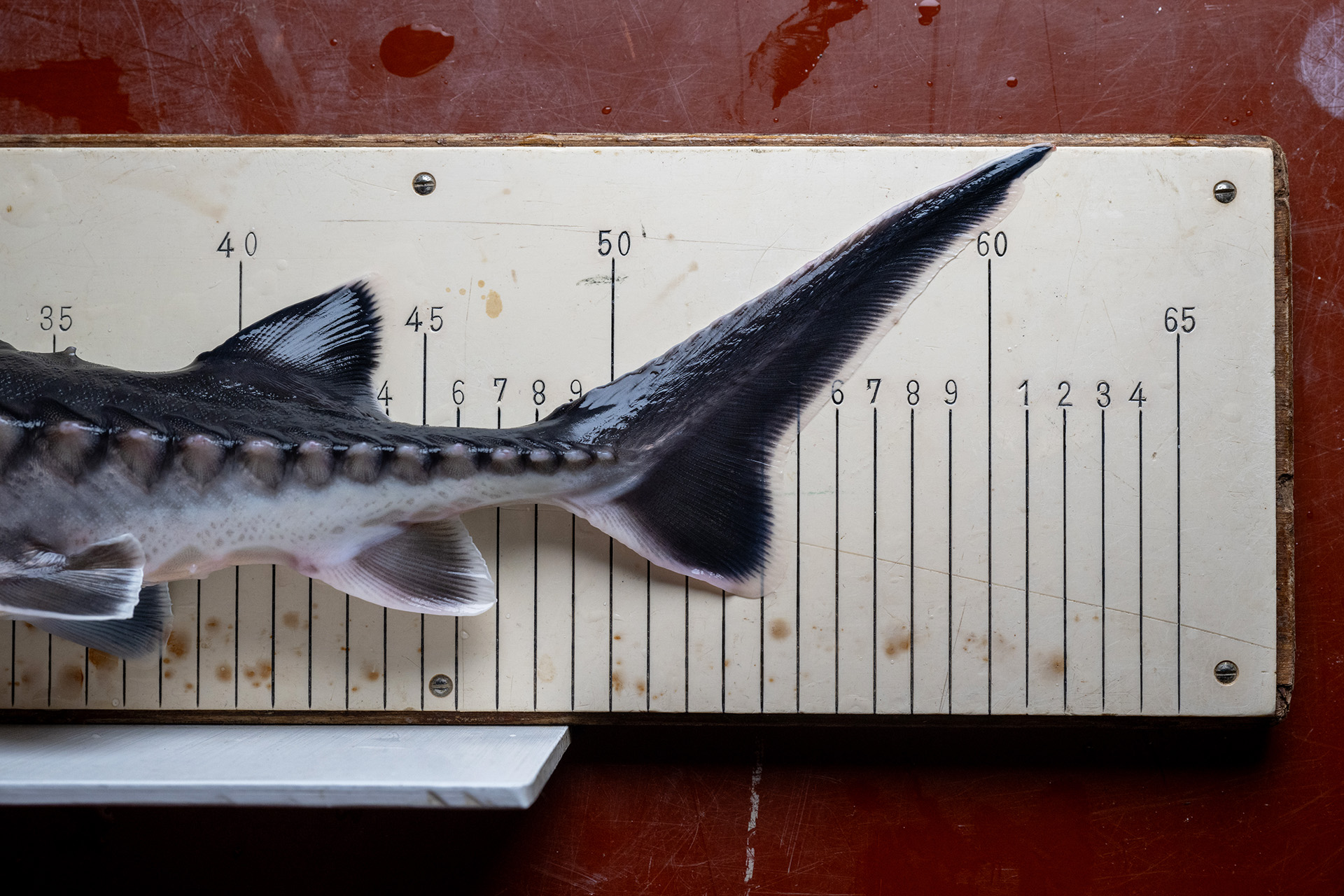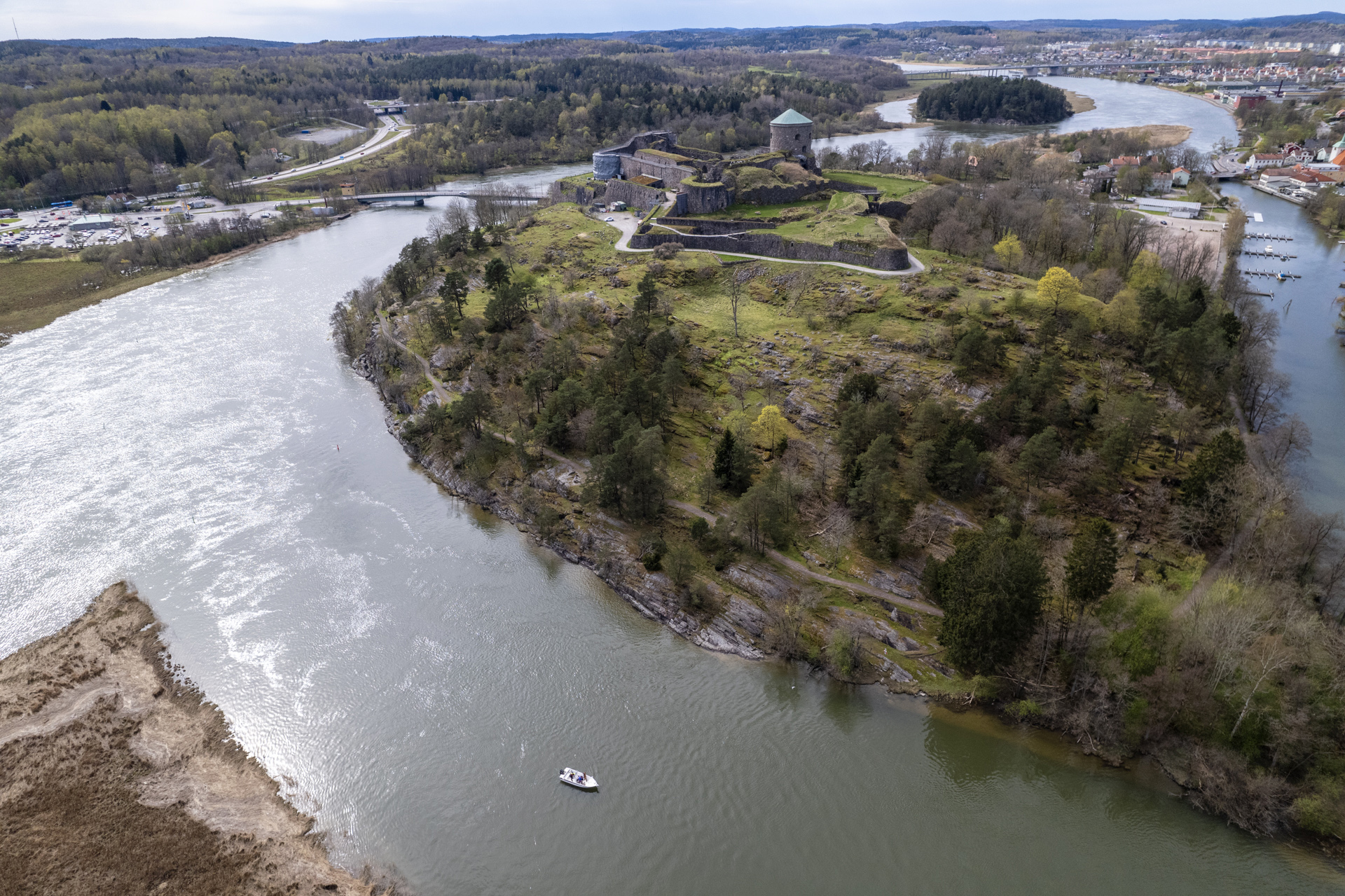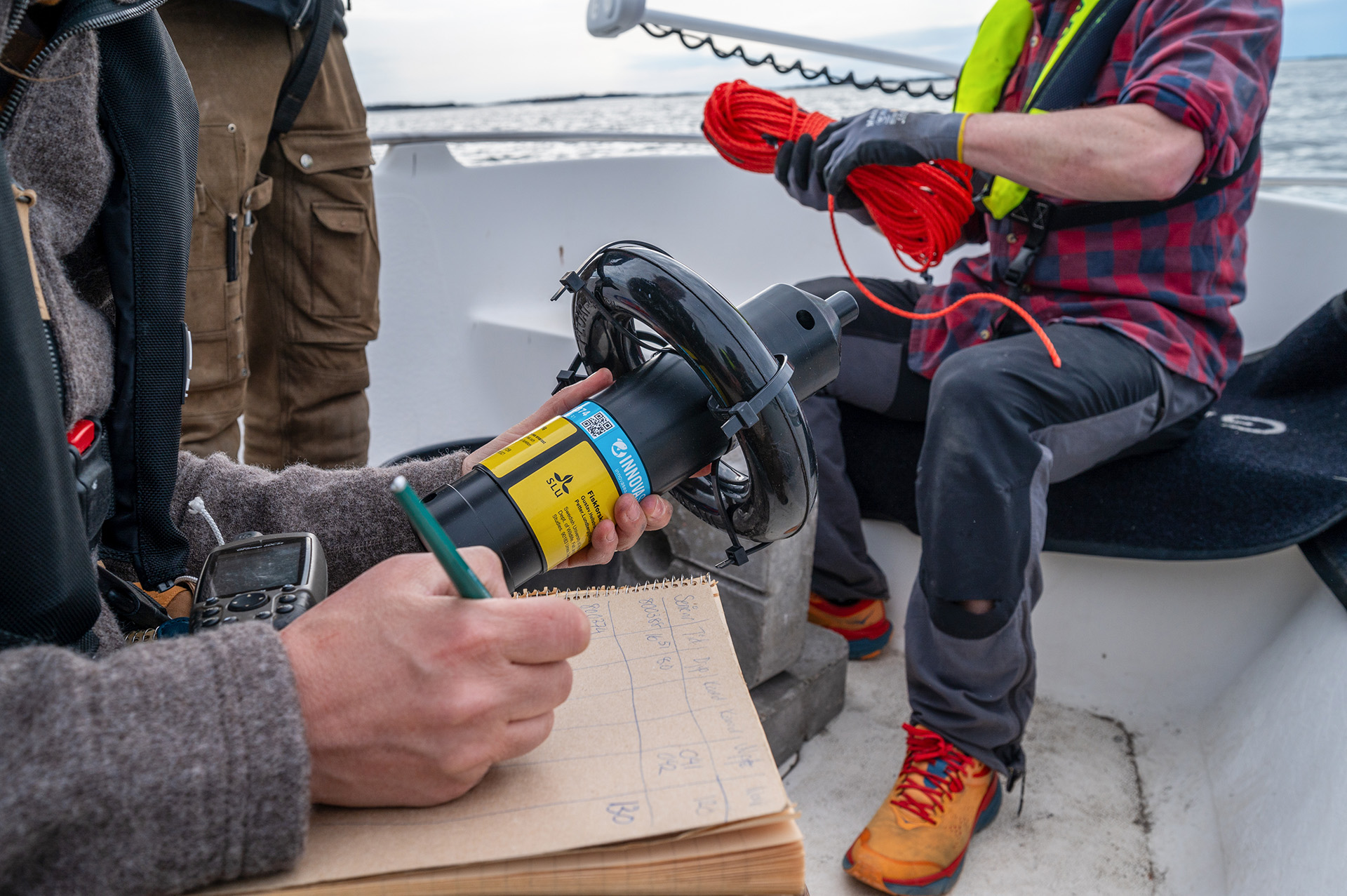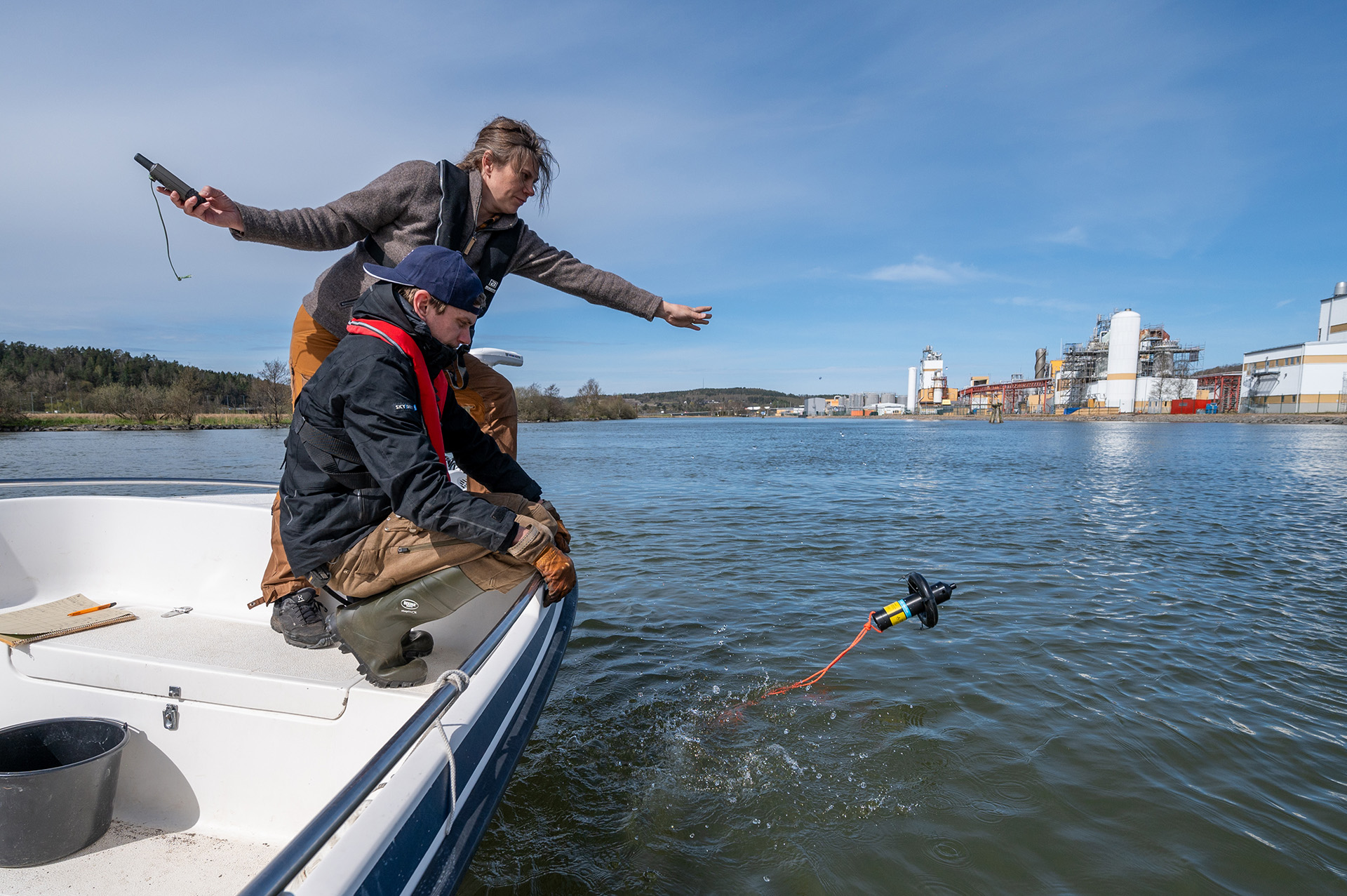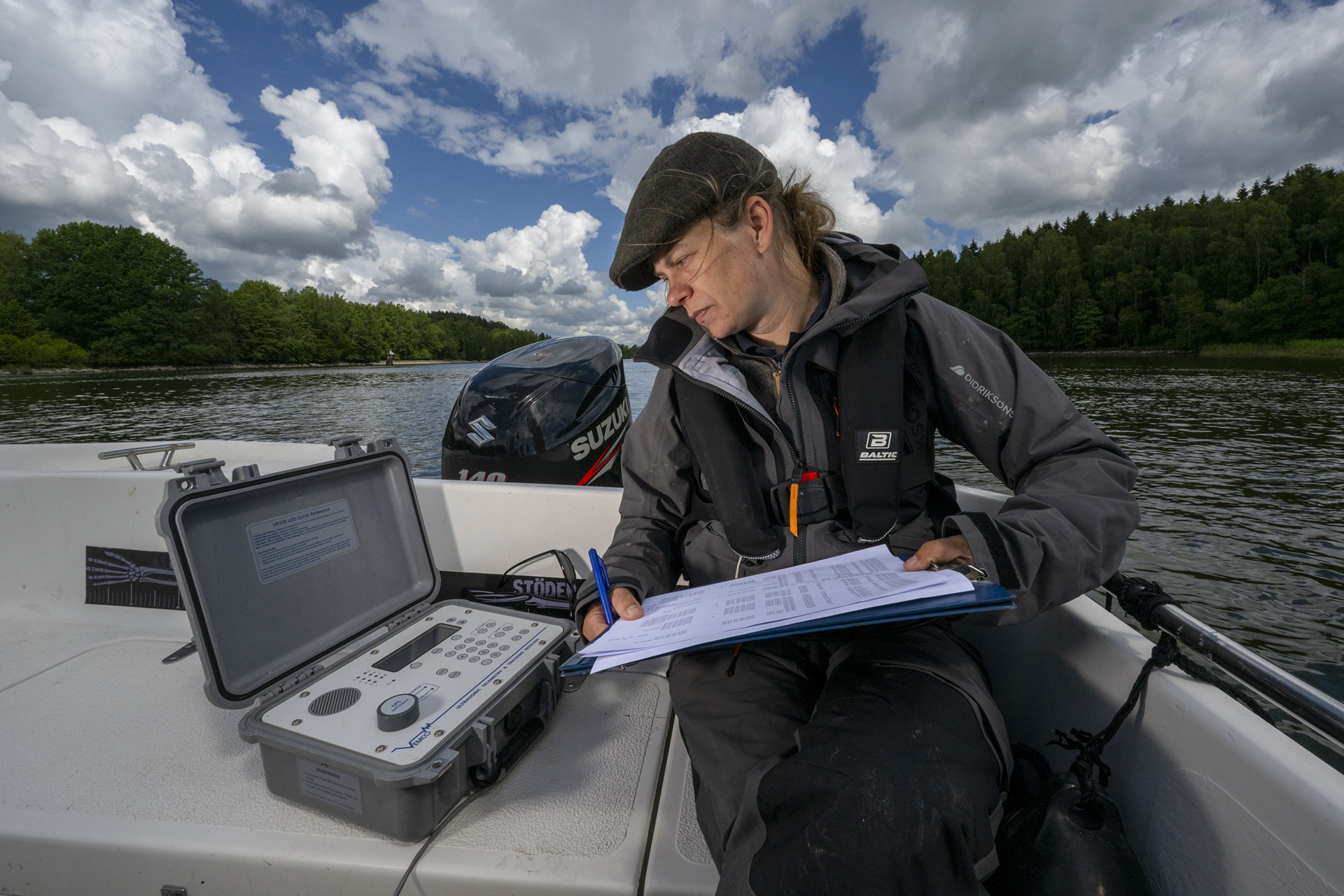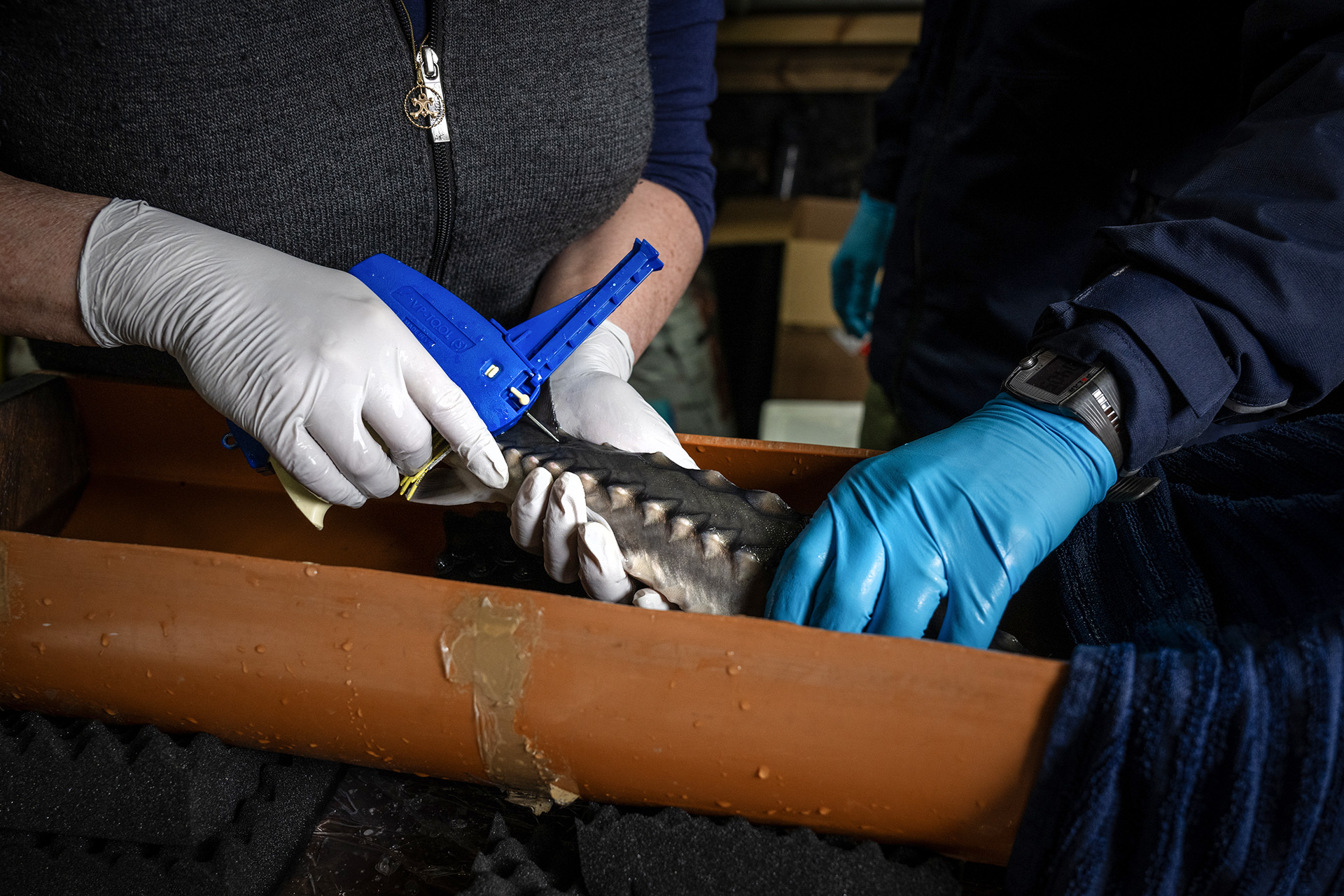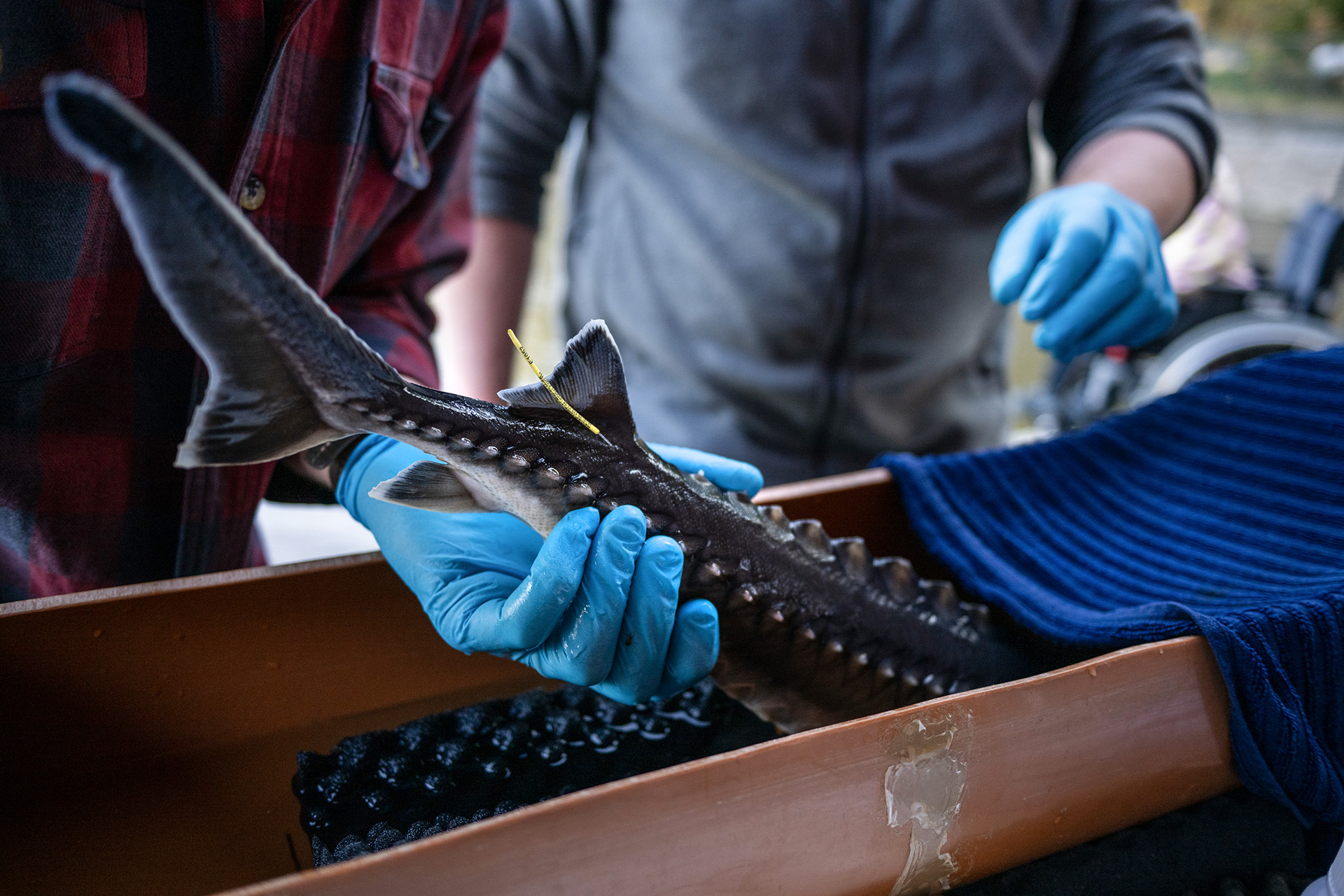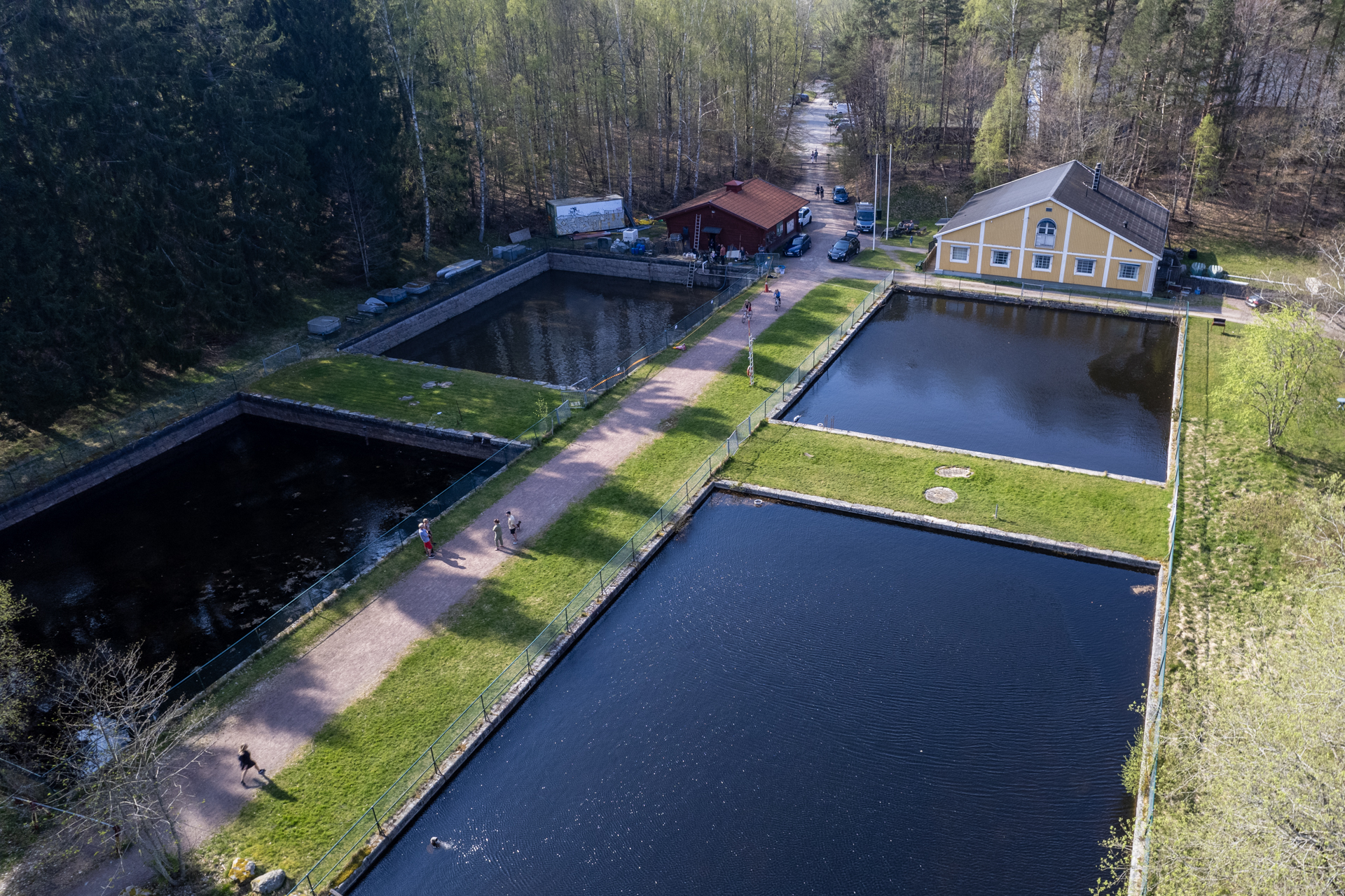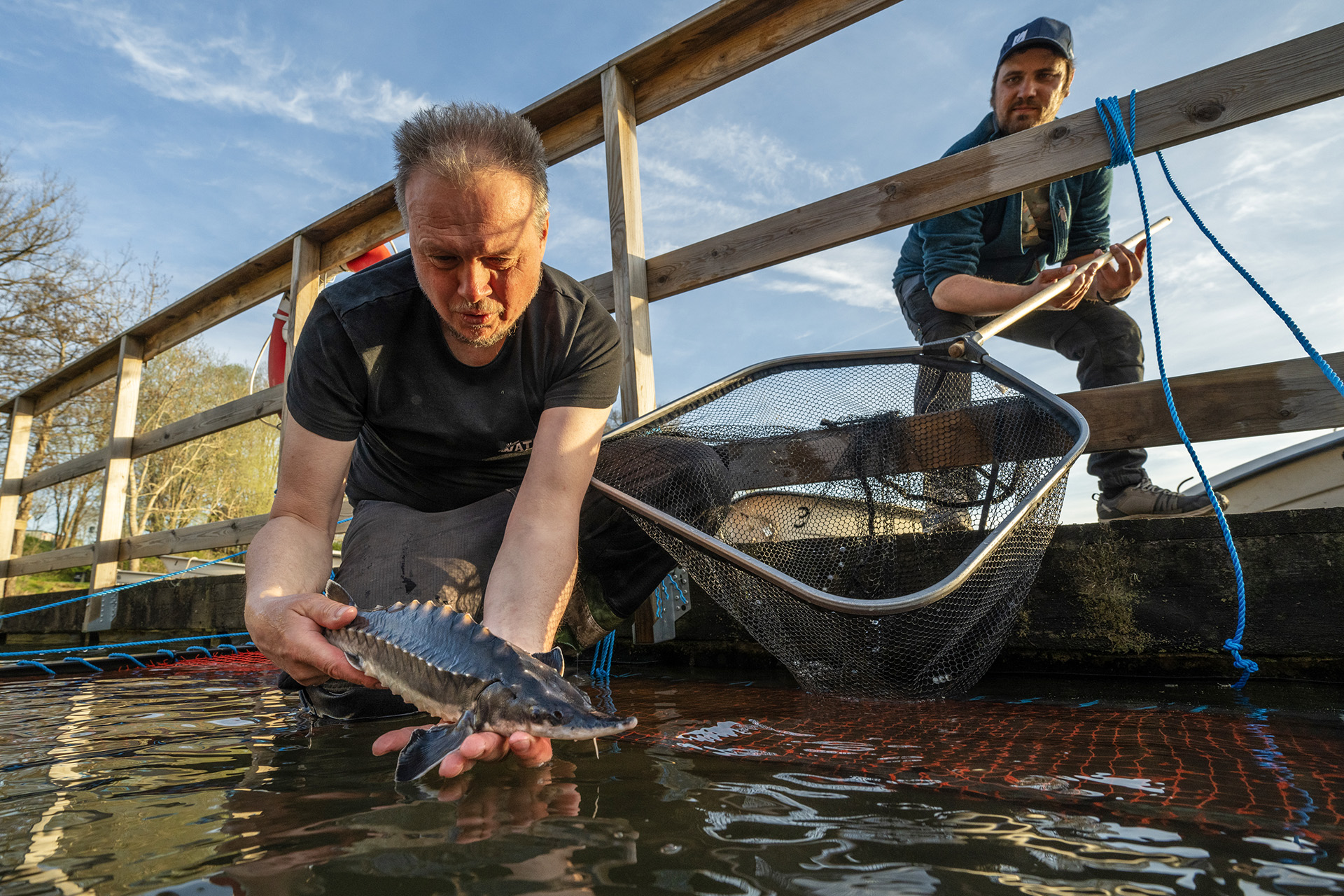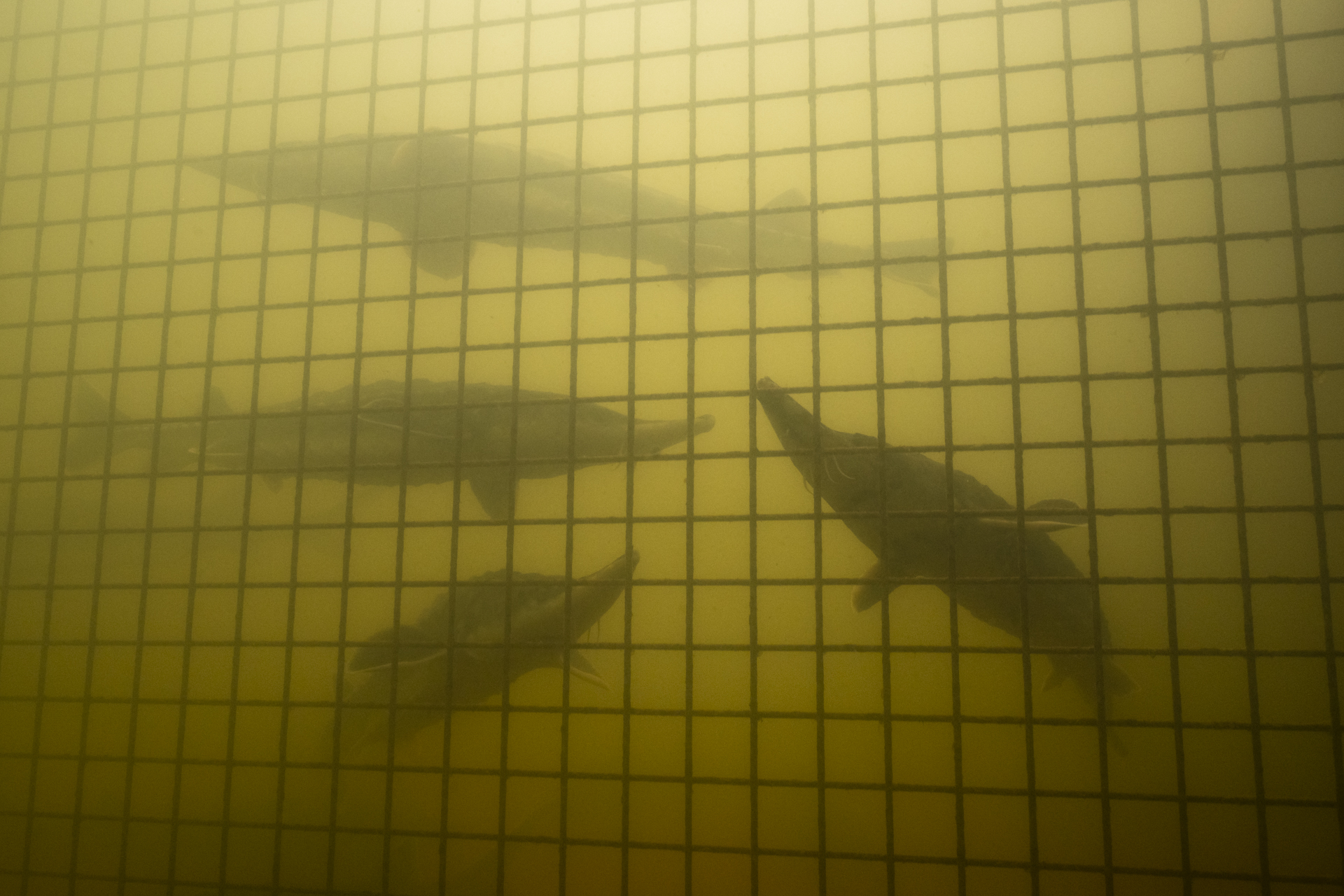The Atlantic sturgeon, a keystone species, was driven to functional extinction in Europe in the middle of the twentieth century. Supported by a grant from Rewilding Europe’s European Wildlife Comeback fund, a pioneering initiative has seen this iconic fish reintroduced in a Swedish river for the first time ever.
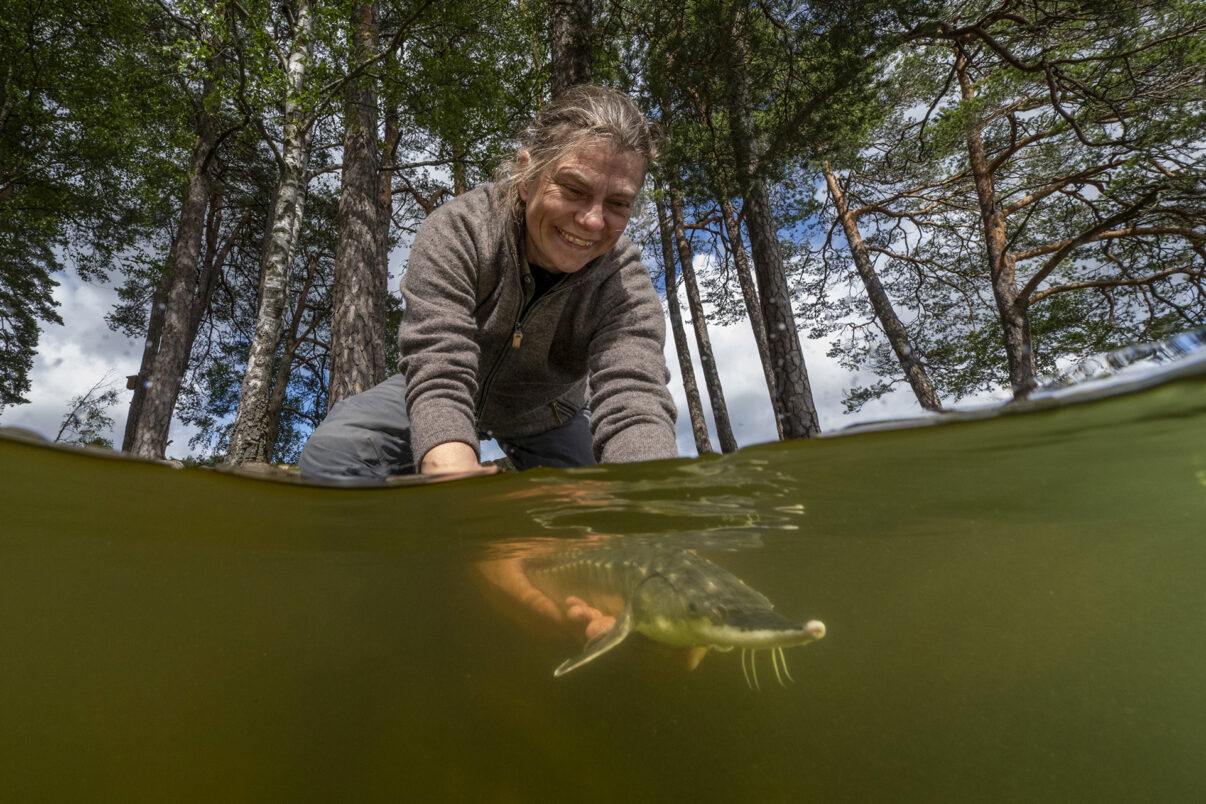
The sturgeon returns
A 42,000-euro grant from Rewilding Europe’s European Wildlife Comeback Fund has supported the first-ever reintroduction of Atlantic sturgeon (Acipenser oxyrinchus oxyrinchus) in Sweden. The “Return of the Sturgeon” initiative, which is managed by the Swedish Anglers Association (Sportfiskarna), aims to re-establish the species in the Göta River – the largest river in Sweden. A total of 100 juvenile sturgeon were translocated from a breeding facility in the village of Born auf dem Darß, on Germany’s Baltic sea coast, which is operated by the Mecklenburg-Vorpommern Research Center for Agriculture and Fisheries in Rostock. The fish, which at 10 months old are around 60 cm in length and 1kg in weight, have now been released into the river near Bohus Fortress, in the city of Kungälv.
“This is a unique and incredibly exciting event,” says project leader Linnéa Jägrud, who is overseeing the Return of the Sturgeon initiative as a limnologist working for the Swedish Anglers Association. “The reintroduction of a regionally extinct species is very uncommon in Sweden. I’m looking forward to the day when we can look at the river and say ‘there are Atlantic sturgeon spawning below the surface here’.”
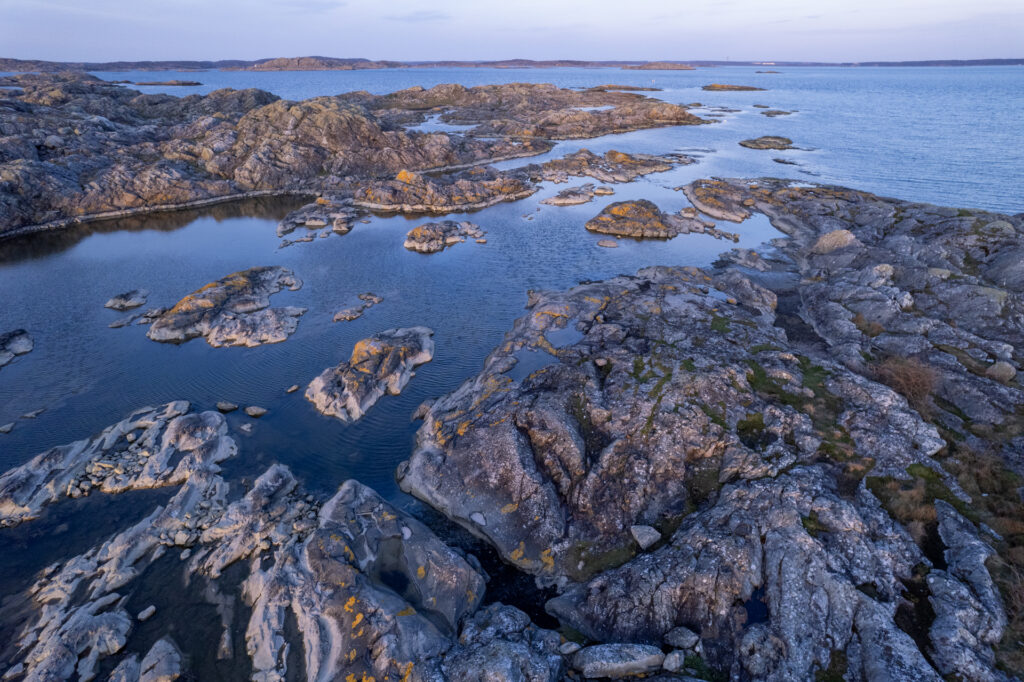
Maximising the chances of recovery
The Göta River contained spawning populations of Atlantic sturgeon until the start of the twentieth century. But the species then became locally extinct, mainly due to overfishing and deteriorating water quality. The Göta River contained spawning populations of Atlantic sturgeon until the start of the twentieth century. But the species then became locally extinct, mainly due to overfishing and deteriorating water quality. Historic specimens of Atlantic sturgeon at the Gothenburg Museum of Natural History, which were taken from the Göta, indicate that the species once existed and spawned in the river. As three of these specimens are juveniles – and juvenile sturgeon are unable to survive in salt water – this is proof that the fish hatched in the river in the past.
Today, the water quality in the Göta has improved and the river system is relatively biodiverse, with a wide range of habitats. Prior to reintroduction, spawning habitats and food sources suitable for Atlantic sturgeon were identified over a sufficiently large area. The reintroduced sturgeon are not expected to stay in the river through their entire life, but will migrate to the estuary, and ultimately the sea, after they develop a higher salinity tolerance with increasing age and size. The juvenile sturgeon were initially kept in riverside pools to allow them to acclimatise to their new aquatic environment.
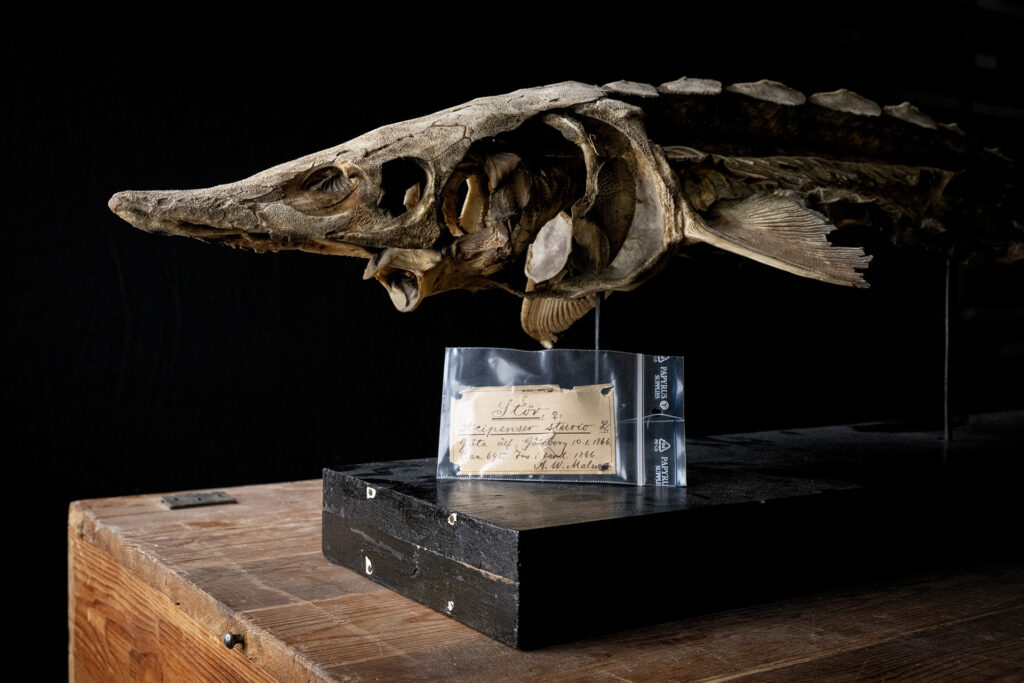
An ecologically important ambassador
The Atlantic sturgeon, which is also known as the Baltic sturgeon, is a species of sturgeon native to Europe and North America. This is a truly impressive fish, which can live for 90 years or more. Specimens with lengths over 4 metres and weights of over 350 kg have been recorded, although they typically grow to between 1.8 and 2.4 metres in length. Rather than having true scales, the Atlantic sturgeon has five rows of bony plates known as scutes, with a coloration ranging from bluish-black and olive green on the back, to white underneath. They have late sexual maturity (up to 15 years) and spawn at low frequencies (up to once every five years).
Sturgeon are both keystone and indicator species, playing an essential role maintaining the health and balance of aquatic ecosystems. Using their narrow, tapered heads to forage for insect larvae and crustaceans, they naturally disturb riverbeds, enhancing oxygenation, moving organic matter along waterways, and creating spawning grounds for smaller fish. They also act as hosts for species such as lampreys and freshwater pearl mussels, and eat invasive species that would otherwise disrupt natural food webs. They depend on an interlinked network of habitats that provide them with suitable conditions for feeding, migrating and spawning, and are sensitive to changes in water temperature, oxygen levels, and other environmental factors.
“The sturgeon can become a symbol for the overall health of the Göta River,” says Linnéa Jägrud. “It will be an ecological ambassador for the river.”
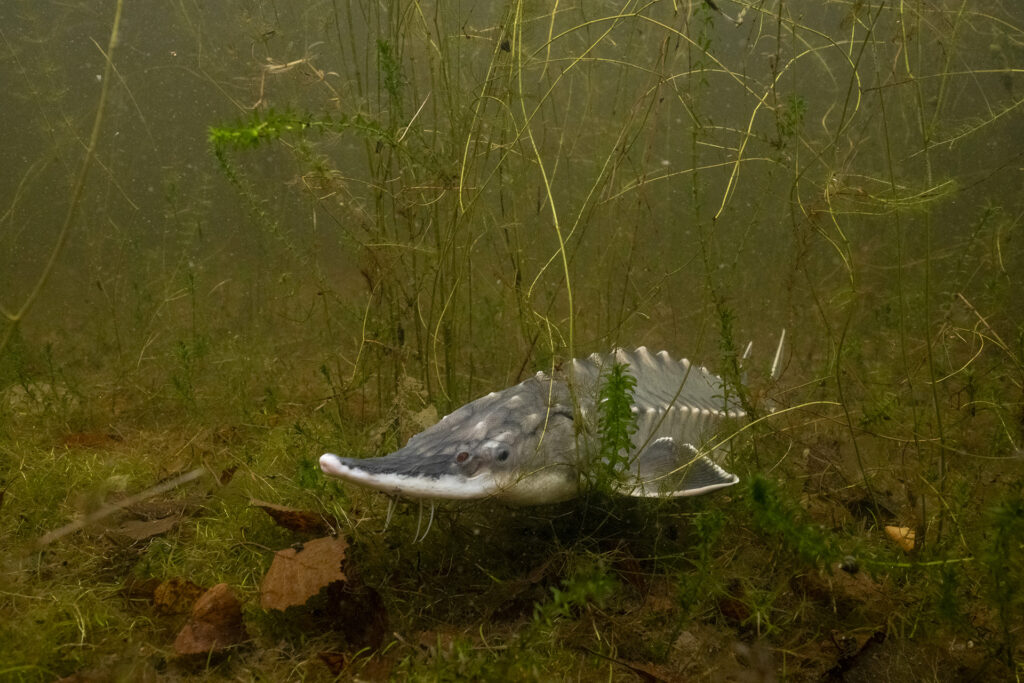
Funding support
The sturgeon reintroduction is being carried out in collaboration with the University of Gothenburg, the Swedish University of Agricultural Sciences, and the Gothenburg Museum of Natural History, as well as sturgeon experts from the German Leibniz-Institute for Freshwater Ecology and Inland Fisheries in Berlin. The institute, which is considered the leading European authority on the ecology of the Atlantic sturgeon, has worked for many years on reintroduction efforts.
The money from the European Wildlife Comeback Fund grant was used to finance a range of costs, including the translocation of the sturgeon from Germany, and accommodation for researchers and volunteers involved in tagging the fish before their release.
“Reintroducing Atlantic sturgeon in Sweden after an absence of more than a century is a huge milestone,” says Rewilding Europe’s rewilding manager Sophie Monsarrat. “I’m so pleased the fund was able to support this release. There is an urgent need to restore the functionality of terrestrial, freshwater, and marine ecosystems across Europe by bringing back keystone species.”

Scaling up
Like many other sturgeon species, the Atlantic sturgeon can tolerate a wide range of salinities, spending most of their lives in saltwater, but migrating up rivers to spawn. Tagging and genetic research has shown that sturgeons will use the same breeding rivers for years, returning to the river where they were born.
Prior to their release into the Göta River, the juvenile sturgeon were fitted with acoustic transmitters, enabling them to be tracked in European waters via the European Tracking Network. In the river and coastal area outside the estuary, monitoring efforts will provide valuable insight into the movement and behaviour of the fish, enabling further reintroduction efforts to be enhanced.
Moving forwards, the aim is to reintroduce more sturgeon into the Göta River every year.
“I would like to release at least several thousand juveniles, because there will be high mortality,” explains Linnéa Jägrud. “The ideal scenario would be to establish a rearing facility here in Sweden. This would increase the chances of the sturgeon returning here to breed. We want them to feel that the Göta is their home.”

The bigger picture
The main range of the Atlantic sturgeon is in eastern North America, extending from southern Canada to Florida. Their abundance has declined hugely here, with the species now considered vulnerable on a global scale. A separate population, which scientists believe migrated across the Atlantic around 10,000 years ago, had a historical distribution in northern Europe, including the Baltic Sea region. However, a combination of overfishing, the channelisation and damming of rivers, and pollution, saw the species become functionally extinct in Europe during the second half of the twentieth century.
In Europe, the Atlantic sturgeon is now protected by the EU Habitats Directive and three other international agreements. Efforts to reintroduce Atlantic sturgeon have been carried out in Europe since 1996, with American donor populations used due to genetic similarities. The Oder River, the last major river in Germany and Poland where sturgeon and other animals can migrate unhindered over long distances, has been a focus area for the reintroduction of the species since 2006, following the translocation of brood stocks from the St. John’s River in Canada. In 2024, 600 sturgeon were released into the river near the town of Criewen. Other reintroduction initiatives have taken place on the Vistula (Poland), Nemunas (Lithuania), Pärnu (Estonia), and Narva (Estonia).
Let’s rewild together
The agile setup of the European Wildlife Comeback Fund is designed to support wildlife comeback in a convenient and flexible way. Rewilding Europe invites other initiatives working to reintroduce keystone species in European landscapes to consider applying for a grant.
“The grant we received was easy to access and has been incredibly helpful,” says Linnéa Jägrud. “It has been great to work with Rewilding Europe. I would love to see the Göta River and adjacent coastal area become part of a greater marine rewilding landscape.”
Those interested in contributing to wildlife recovery in Europe can support wildlife comeback with an online donation. If you’d like to invest more than 50,000 euros in the European Wildlife Comeback Fund, we’d love to get in touch with you personally.

